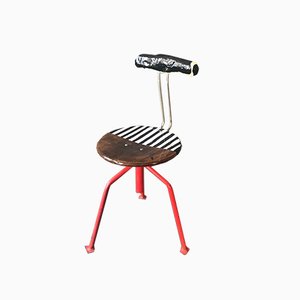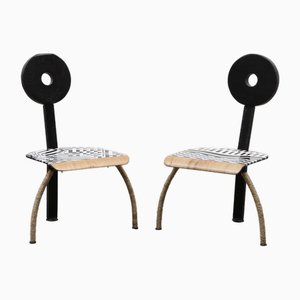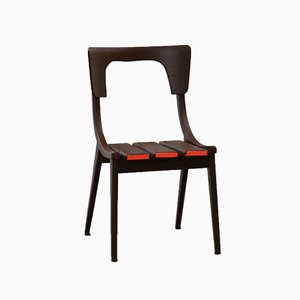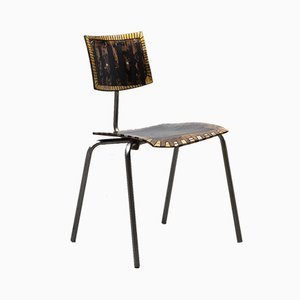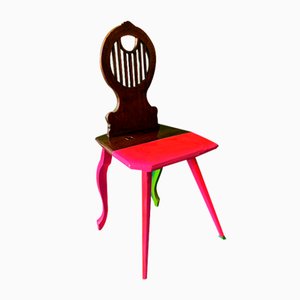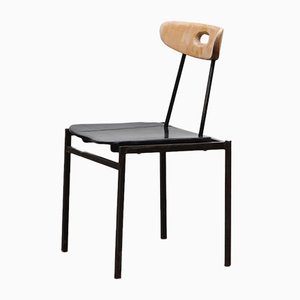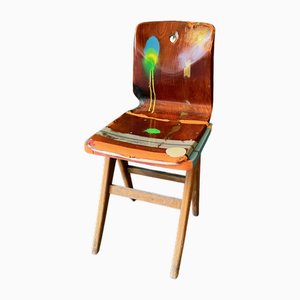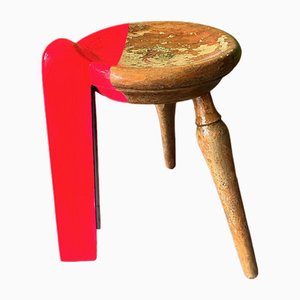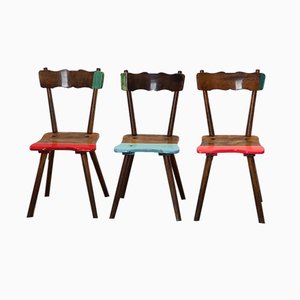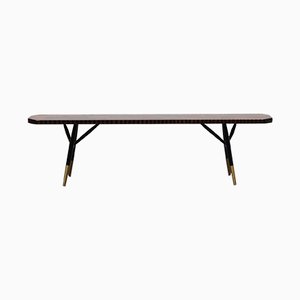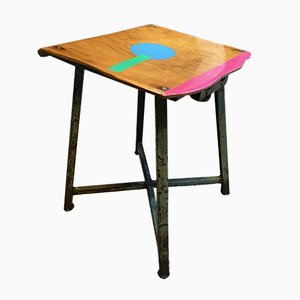
German artist and designer Markus Friedrich Staab transforms the everyday, the forgotten and the normal into the extraordinary. Armed with a scalpel and a variety of brightly colored paints, Staab treats park benches, farmers' stools and industrial chairs in the same way that an artists treats her canvas. Staab's icon is the mass-produced chair. It is however reclaimed through his work: transformed from one piece of a homogenous set to an individual piece with a unique coat.
Working from his atelier in Frankfurt am Main, Staab's work is more demanding than it may seem. He lacquers his work at least twelve times, paints with pop colors and then applies a high-gloss varnish. Often the process will also include spray painting and sanding of surfaces. Staab aims to recapture ideas of utility in his work and the result of a striking and beautifully modified product. His maxim of 're-cycled, re-furbished, re-mixed and re-decorated' is the clearest expression of his ethos.
Staab is a self-taught artist and designer who began as a painter and sculptor. His work with objects found on the street or in second-hand stores, and particularly chairs, began in earnest in 2010. Since then he has transformed a variety of objects, most often with a history: a courtroom bench from Hamburg in the 60s, a pair of chairs from a German church given to him by a friend and even an architect‘s chair found in the streets of Frankfurt from the 1930s. As Staab continues to remix the regular, he becomes a symbol for sustainable artwork and equally for individual expression in all of its colorways.


